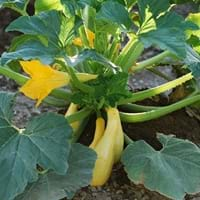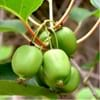Life Span
Perennial
Annual
Origin
Eastern Asia
Hybrid origin, North America, Mexico, Central America
Types
Actinidia arguta, Actinidia giraldii, Actinidia hypoleuca
Not Available
Number of Varieties
Not Available
Habitat
Dappled Shade, open Woodlands
Not Available
USDA Hardiness Zone
3-8
Not Available
Sunset Zone
1a, 1b, 2a, 2b, 3a, 3b, 4, 5, 6, 7, 8, 9, 14, 15, 16, 17, 18, 19, 20
A1, A2, A3, H1, H2, 1a, 1b, 2a, 2b, 3a, 3b, 4, 5, 6, 7, 8, 9, 10, 11, 12, 13, 14, 15, 16, 17, 18, 19, 20, 21, 22, 23, 24
Habit
Vining/Climbing
Vining/Climbing
Flower Color
White, Ivory
Yellow, Orange
Flower Color Modifier
Bicolor
Bicolor
Fruit Color
Green, Yellow green
Yellow
Leaf Color in Spring
Green, Dark Green
Green
Leaf Color in Summer
Dark Green
Green, Dark Green
Leaf Color in Fall
Dark Green
Green, Dark Green
Leaf Color in Winter
Light Green
Not Available
Leaf Shape
Oval
Heart-shaped
Plant Season
Spring, Summer, Fall
Summer, Fall
Sunlight
Full Sun, Partial Sun
Full Sun
Growth Rate
Medium
Very Fast
Type of Soil
Loam
Loam, Sand
The pH of Soil
Neutral
Neutral
Soil Drainage
Well drained
Well drained
Bloom Time
Spring, Late Spring, Early Summer
Indeterminate
Tolerances
Shade areas
Drought
Where to Plant?
Ground, Pot
Container, Ground
How to Plant?
Grafting, Stem Cutting
Divison
Plant Maintenance
Low
Medium
Watering Requirements
Average Water Needs, Requires regular watering
Do not water frequently
In Summer
Regular watering required
Lots of watering
In Spring
Moderate
Moderate
In Winter
Average Water
Average Water
Soil Type
Loam
Loam, Sand
Soil Drainage Capacity
Well drained
Well drained
Sun Exposure
Full Sun, Partial Sun
Full Sun
Pruning
Remove damaged leaves, Remove dead branches, Remove dead leaves
Remove dead or diseased plant parts, Requires very little pruning
Fertilizers
Apply 10-10-10 amount, fertilize twice a year
All-Purpose Liquid Fertilizer
Pests and Diseases
Botrytis head rot, Japanese Beetles, Leaf Rollers, Nematodes, Phytophthora, Root rot, Sclerotinia blight, Spider mites, Thripes
Borers, Cucumber beetles, Mealybugs, Powdery mildew
Plant Tolerance
Shade areas
Drought
Flower Petal Number
Single
Single
Foliage Texture
Medium
Coarse
Foliage Sheen
Glossy
Matte
Attracts
Cats
Not Available
Allergy
Not Available
Not Available
Aesthetic Uses
Cottage Garden
Not Used For Aesthetic Purpose
Beauty Benefits
Not Available
Not Available
Environmental Uses
Shadow Tree
Air purification
Medicinal Uses
Antioxidants, Fiber, Folate, Rich in Potassium, Vitamin C
Not Available
Part of Plant Used
Fruits
Fruits
Other Uses
Grown for shade
Used as a nutritious food item, Used As Food
Used As Indoor Plant
No
No
Used As Outdoor Plant
Yes
Yes
Garden Design
Edible, Feature Plant, Vine
Edible, Herb / Vegetable, Vine
Botanical Name
ACTINIDIA arguta
CUCURBITA pepo 'Papaya Pear'
Common Name
Hardy Kiwi
Summer Squash
In Hindi
हार्डी कीवी
summer squash
In German
Hardy Kiwi
Sommerkürbis
In French
kiwai
courges d'été
In Spanish
kiwi hardy
calabaza de verano
In Greek
σκληραγωγημένα ακτινίδια
καλοκαίρι σκουός
In Portuguese
kiwi Hardy
abobrinha
In Polish
hardy kiwi
latem squash
In Latin
Hardy kiwi
aestas cucurbitae
Phylum
Magnoliophyta
Magnoliophyta
Class
Magnoliopsida
Magnoliopsida
Family
Actinidiaceae
Cucurbitaceae
Genus
Actinidia
Cucurbita
Clade
Angiosperms, Asterids, Eudicots
Angiosperms, Eudicots, Rosids
Tribe
Not Available
Cucurbiteae
Subfamily
Actinidiaceae
Cucurbitoideae
Number of Species
Not Available
Importance of Hardy Kiwi and Summer Squash
Want to have the most appropriate plant for your garden? You might want to know the importance of Hardy Kiwi and Summer Squash. Basically, these two plants vary in many aspects. Compare Hardy Kiwi and Summer Squash as they differ in many characteristics such as their life, care, benefits, facts, etc. Every gardener must at least have the slightest clue about the plants he wants to plant in his garden. Compare their benefits, which differ in many ways like facts and uses. The medicinal use of Hardy Kiwi is Antioxidants, Fiber, Folate, Rich in Potassium and Vitamin C whereas of Summer Squash is Not Available. Hardy Kiwi has beauty benefits as follows: Not Available while Summer Squash has beauty benefits as follows: Not Available.
Compare Facts of Hardy Kiwi vs Summer Squash
How to choose the best garden plant for your garden depending upon its facts? Here garden plant comparison will help you to solve this query. Compare the facts of Hardy Kiwi vs Summer Squash and know which one to choose. As garden plants have benefits and other uses, allergy is also a major drawback of plants for some people. Allergic reactions of Hardy Kiwi are Not Available whereas of Summer Squash have Not Available respectively. Having a fruit bearing plant in your garden can be a plus point of your garden. Hardy Kiwi has no showy fruits and Summer Squash has showy fruits. Also Hardy Kiwi is not flowering and Summer Squash is flowering. You can compare Hardy Kiwi and Summer Squash facts and facts of other plants too.





